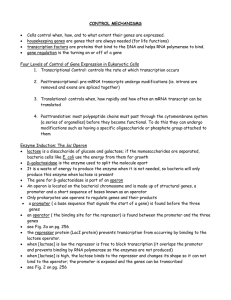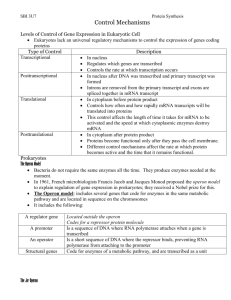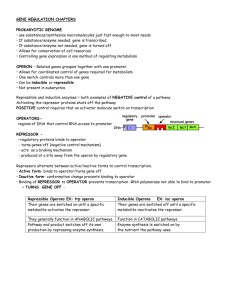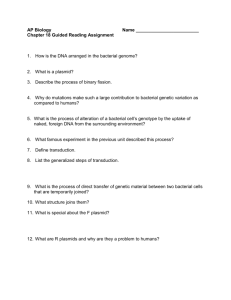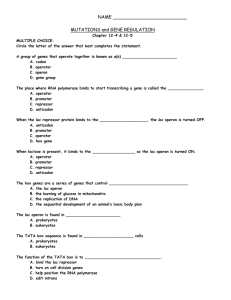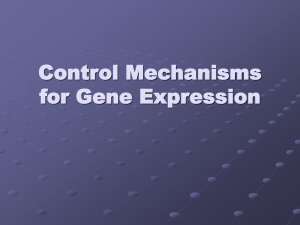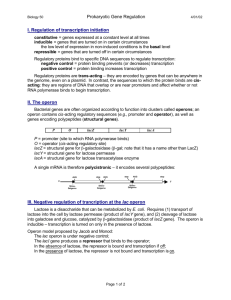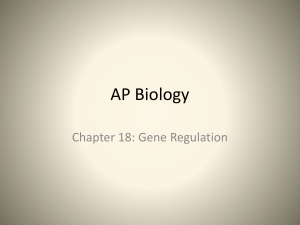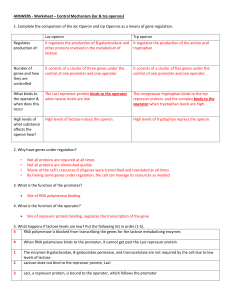LP-Lac Operons
advertisement
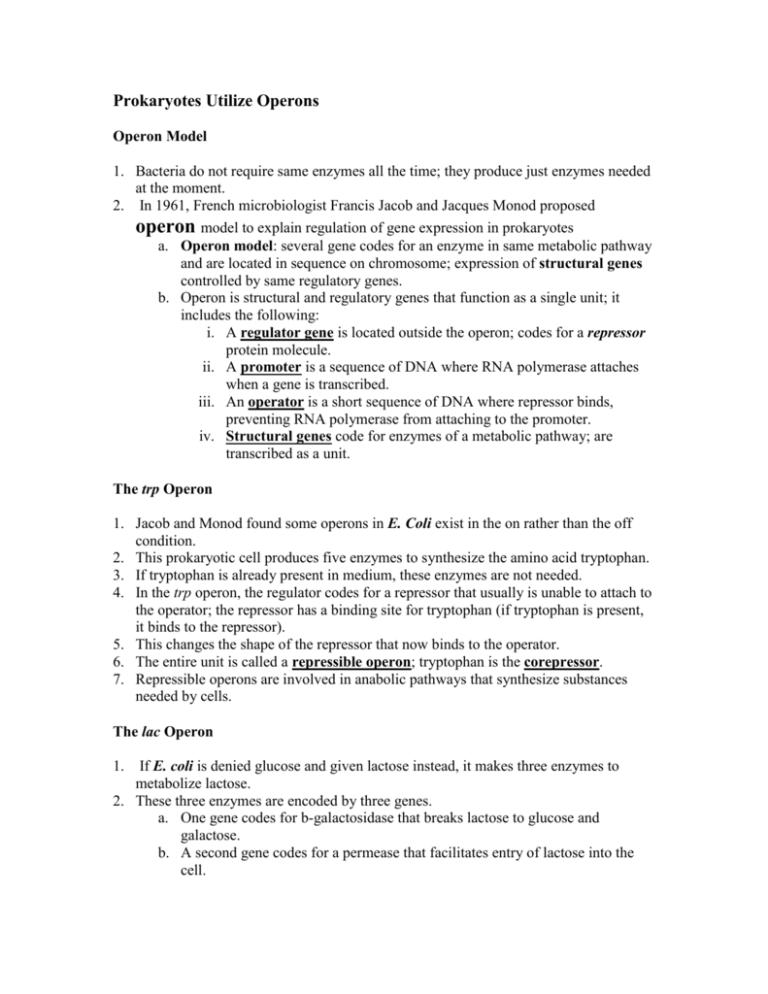
Prokaryotes Utilize Operons Operon Model 1. Bacteria do not require same enzymes all the time; they produce just enzymes needed at the moment. 2. In 1961, French microbiologist Francis Jacob and Jacques Monod proposed operon model to explain regulation of gene expression in prokaryotes a. Operon model: several gene codes for an enzyme in same metabolic pathway and are located in sequence on chromosome; expression of structural genes controlled by same regulatory genes. b. Operon is structural and regulatory genes that function as a single unit; it includes the following: i. A regulator gene is located outside the operon; codes for a repressor protein molecule. ii. A promoter is a sequence of DNA where RNA polymerase attaches when a gene is transcribed. iii. An operator is a short sequence of DNA where repressor binds, preventing RNA polymerase from attaching to the promoter. iv. Structural genes code for enzymes of a metabolic pathway; are transcribed as a unit. The trp Operon 1. Jacob and Monod found some operons in E. Coli exist in the on rather than the off condition. 2. This prokaryotic cell produces five enzymes to synthesize the amino acid tryptophan. 3. If tryptophan is already present in medium, these enzymes are not needed. 4. In the trp operon, the regulator codes for a repressor that usually is unable to attach to the operator; the repressor has a binding site for tryptophan (if tryptophan is present, it binds to the repressor). 5. This changes the shape of the repressor that now binds to the operator. 6. The entire unit is called a repressible operon; tryptophan is the corepressor. 7. Repressible operons are involved in anabolic pathways that synthesize substances needed by cells. The lac Operon 1. If E. coli is denied glucose and given lactose instead, it makes three enzymes to metabolize lactose. 2. These three enzymes are encoded by three genes. a. One gene codes for b-galactosidase that breaks lactose to glucose and galactose. b. A second gene codes for a permease that facilitates entry of lactose into the cell. 3. 4. 5. 6. 7. c. A third gene codes for enzyme transacetylase, which is an accessory in lactose metabolism. The three genes are adjacent on chromosome and under control of one promoter and operator. The regulator gene codes for a lac operon repressor protein that binds to the operator and prevents transcription of the three genes. When E. coli is switched to medium containing lactose, lactose binds to the repressor, the repressor undergoes a change in shape that prevents it from binding to the operator. Because the repressor is unable to bind to the operator, the promoter is able to bind to RNA polymerase, which carries out transcription and produces the three enzymes. An inducer is any substance, lactose in the case of the lac operon, that can bind to a particular repressor protein, preventing the repressor from binding to a particular operator, consequently permitting RNA polymerase to bind to the promoter, causing transcription of structural genes. Movie: http://www.csam.montclair.edu/%7Esmalley/LacOperon.mov

